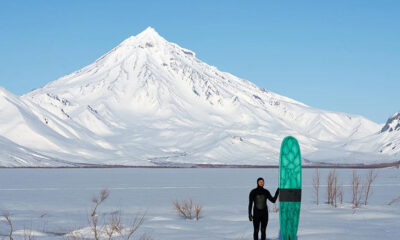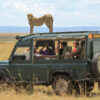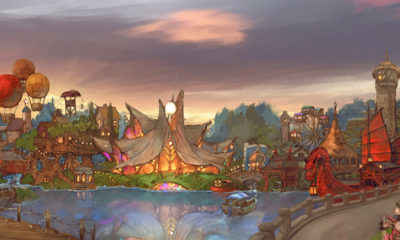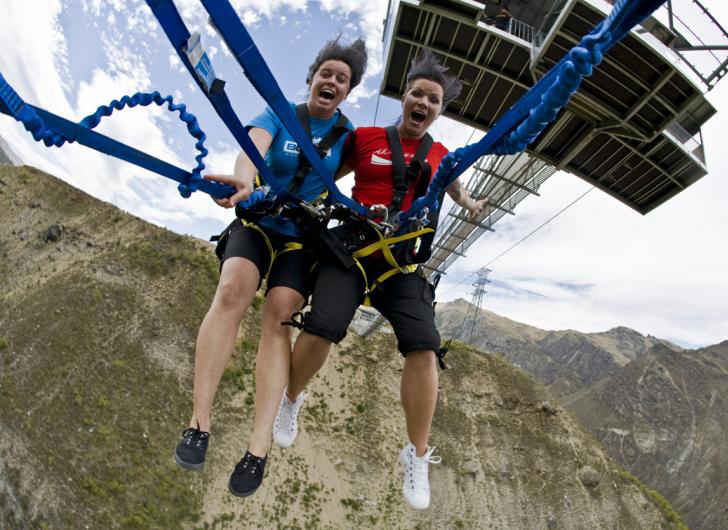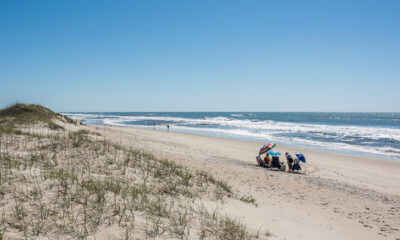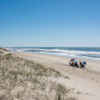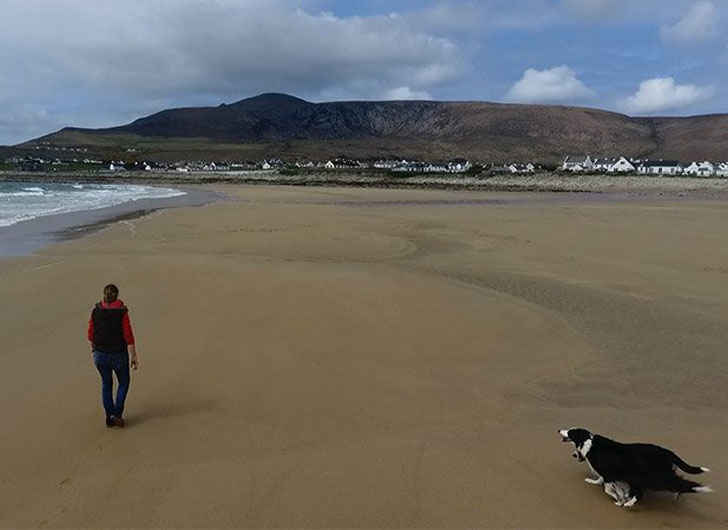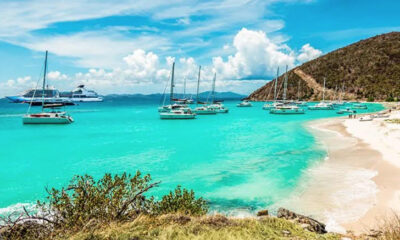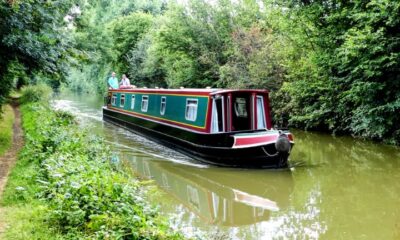
Shutterstock
North America boasts some of the most diverse and stunning camping destinations in the world, attracting adventurers and nature lovers alike. From the rugged peaks of the Rocky Mountains to the serene waters of the Great Lakes, each site offers a unique blend of natural beauty and outdoor activities. Whether you seek the solitude of backcountry trails or the thrill of exploring famous national parks, there is something for every type of camper. This guide highlights the top 25 camping spots across the continent, showcasing spots known for their breathtaking landscapes and rich biodiversity. Embark on a journey through these revered locales and discover the boundless beauty that camping in North America has to offer.
Banff National Park, Alberta, Canada

Shutterstock
Banff National Park is famed for its breathtaking vistas, featuring turquoise lakes like Lake Louise and Moraine Lake set against the stark beauty of the Rocky Mountains. This park is a haven for wildlife enthusiasts, offering chances to see bears, elk, and wolves in their natural habitat. Hiking, mountain biking, and skiing are popular activities, making Banff a year-round destination for outdoor adventurers. The park’s vast wilderness and charming mountain town atmosphere draw millions of visitors each year, eager to explore its natural splendor.
Yosemite National Park, California, USA

Shutterstock
Yosemite National Park is celebrated for its stunning granite cliffs, ancient giant sequoias, and breathtaking waterfalls. Iconic landmarks like Half Dome and El Capitan attract rock climbers from around the world. The park offers a range of activities from hiking and climbing to bird watching and star gazing. Yosemite’s deep valleys, grand meadows, and vast wilderness areas provide a serene escape into nature.
Jasper National Park, Alberta, Canada
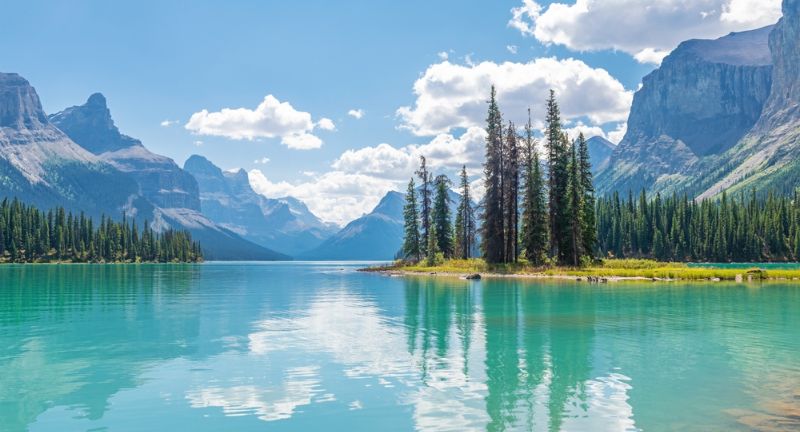
Shutterstock
Jasper National Park, located in the Canadian Rockies, is less crowded than its neighbor Banff, offering a more secluded wilderness experience. This park features stunning landscapes including the famous Icefields Parkway and the soothing Miette Hot Springs. Visitors can enjoy a variety of outdoor activities such as hiking, kayaking, and wildlife viewing, with the park being home to a diverse array of animals including grizzlies and caribou. Jasper’s dark skies also offer some of the best stargazing opportunities in North America.
Zion National Park, Utah, USA
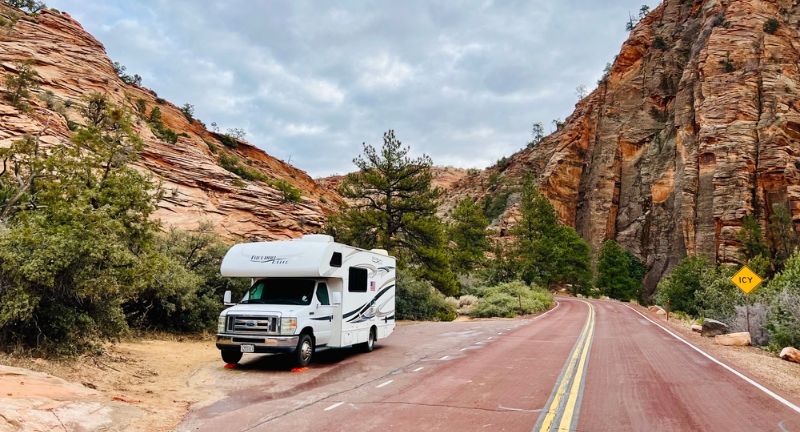
Shutterstock
Zion National Park is renowned for its dramatic landscape of steep red cliffs, narrow canyons, and beautiful vistas. Hiking trails such as The Narrows and Angels Landing offer adventurous paths and breathtaking views from high above the canyon floor. The park’s unique geography makes it a popular spot for canyoneering, climbing, and river trips. Zion’s diverse ecosystems support a variety of wildlife, including mule deer, golden eagles, and mountain lions.
Great Smoky Mountains National Park, Tennessee/North Carolina, USA
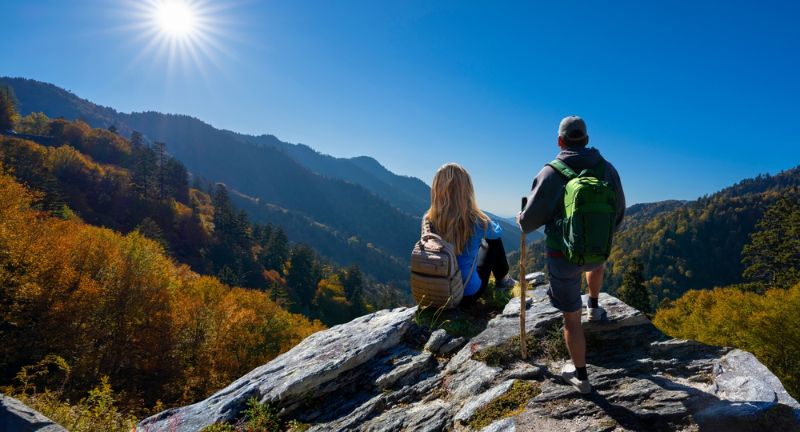
Shutterstock
Great Smoky Mountains National Park is the most visited in the United States, offering lush forests and an abundance of wildflowers that bloom year-round. The park spans across Tennessee and North Carolina with a range of elevations that support diverse habitats. Hiking the Appalachian Trail or exploring the historic Cades Cove offers glimpses into the area’s rich history and natural beauty. The park is also a premier destination for birdwatching and viewing wildlife like black bears and elk.
Teton County, Wyoming, USA
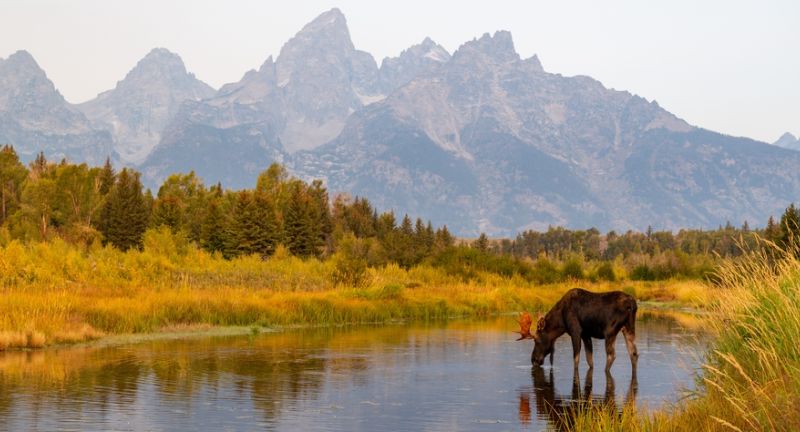
Shutterstock
Teton County is home to Grand Teton National Park, known for its striking mountain landscapes and vibrant wildlife. The Teton Range’s jagged peaks create a dramatic backdrop for activities like hiking, photography, and kayaking on the pristine glacial lakes. The park offers a wide range of hiking trails and multi-day backpacking routes, attracting adventurers seeking solitude and scenic beauty. Wildlife enthusiasts may spot moose, pronghorns, and even grizzly bears, making for unforgettable encounters.
Acadia National Park, Maine, USA
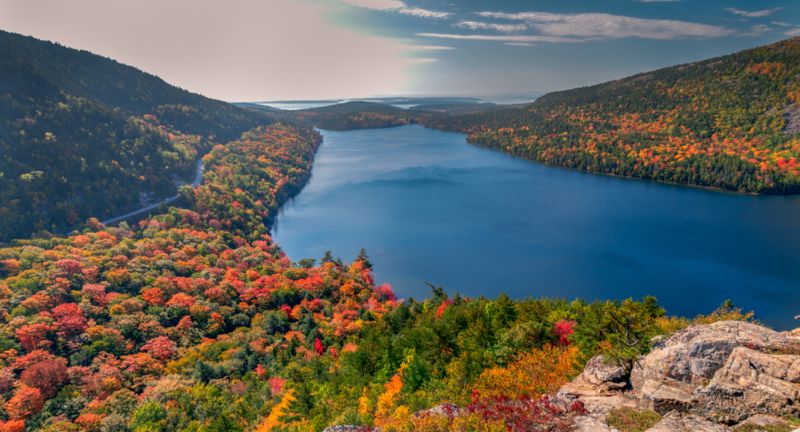
Shutterstock
Acadia National Park, located on Maine’s Mount Desert Island, offers a stunning intersection of sea and mountain scenery. Visitors can hike or bike the historic Carriage Roads, admire the views from atop Cadillac Mountain, or explore the rugged coastline. The park is renowned for its biodiversity and is home to a vast array of plant and animal species. Acadia’s proximity to the Atlantic Ocean influences its weather, creating foggy mornings and spectacular sunrises.
Big Sur, California, USA
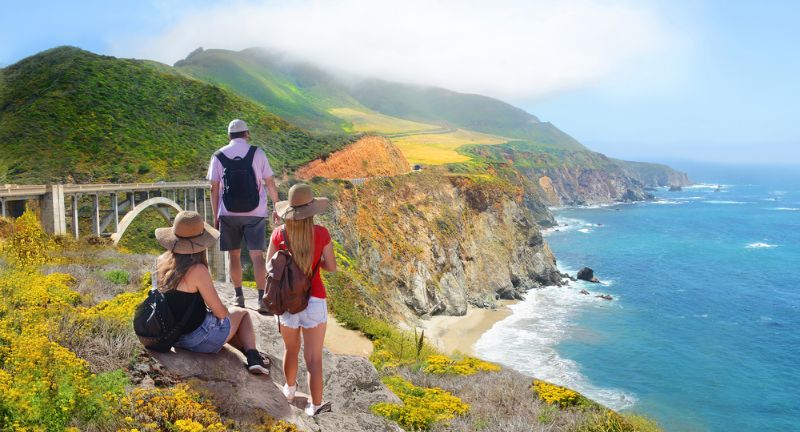
Shutterstock
Big Sur, famous for its dramatic coastline and towering redwoods, offers campers a truly majestic landscape. The region stretches along the central coast of California and is known for its scenic highway that offers stunning views of the Pacific Ocean. Camping in Big Sur allows visitors to immerse themselves in an environment where the forest meets the sea. The area is also rich in wildlife, including sea otters, seals, and a variety of bird species, providing a perfect setting for nature enthusiasts.
Glacier National Park, Montana, USA
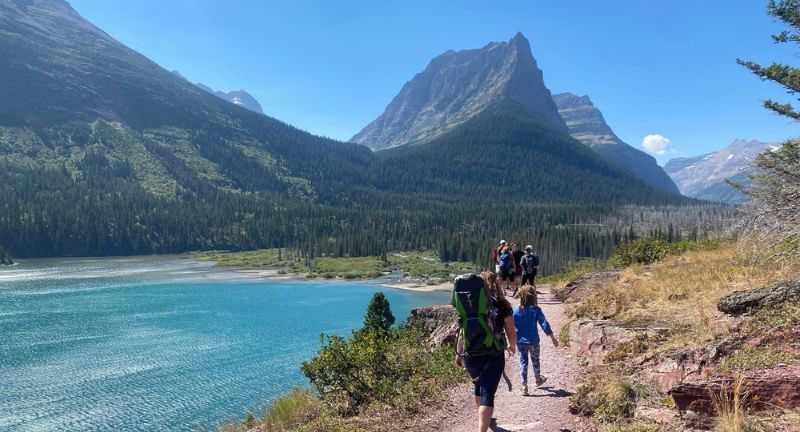
Shutterstock
Glacier National Park, often referred to as the ‘Crown of the Continent’, is renowned for its spectacular glacier-carved terrain and pristine lakes. Visitors can explore over 700 miles of trails that offer breathtaking views and encounters with diverse wildlife. The park’s rugged scenery is a haven for adventurous travelers seeking hiking, backpacking, and photography opportunities. Glacier’s remote wilderness also provides a tranquil escape from the bustle of modern life, offering peacefulness amidst nature’s grandeur.
Yellowstone National Park, Wyoming, USA
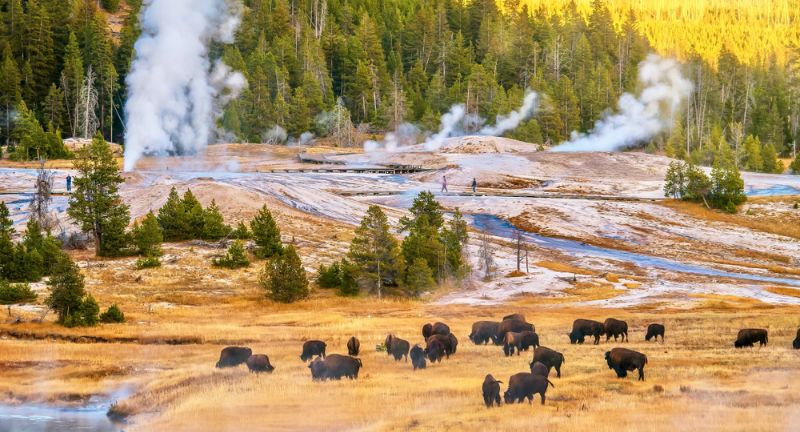
Shutterstock
Yellowstone National Park, famous for its geothermal features like Old Faithful geyser and the Grand Prismatic Spring, offers a landscape like no other. This park, established as the world’s first national park, spans across Wyoming, Montana, and Idaho. Visitors can explore diverse ecosystems, witness erupting geysers, and enjoy the richness of native wildlife such as bison, wolves, and bears. Yellowstone’s vast natural beauty and unique geological features make it a premier destination for nature lovers and scientists alike.
Olympic National Park, Washington, USA
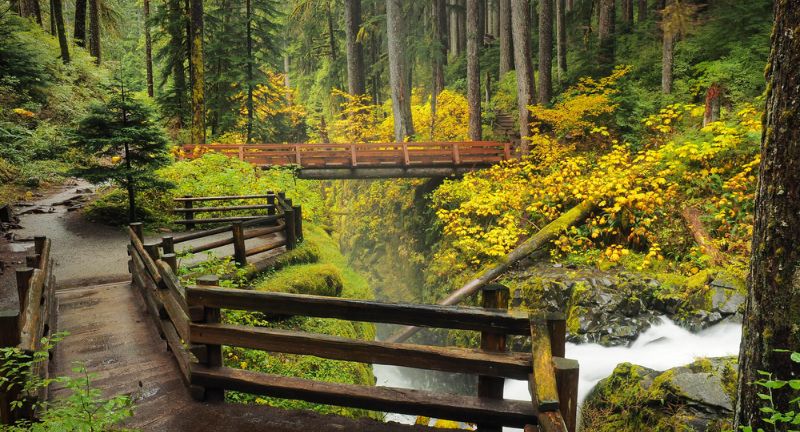
Shutterstock
Olympic National Park encompasses a stunning variety of landscapes, from rugged coastlines and lush rainforests to mountain peaks. This park offers an unparalleled opportunity for solitude and wilderness adventure, with over 900 miles of trails to explore. The diverse environments support a wide range of wildlife, including the endemic Roosevelt elk. Olympic’s remote and untouched nature makes it a perfect destination for those seeking to reconnect with nature.
Algonquin Provincial Park, Ontario, Canada
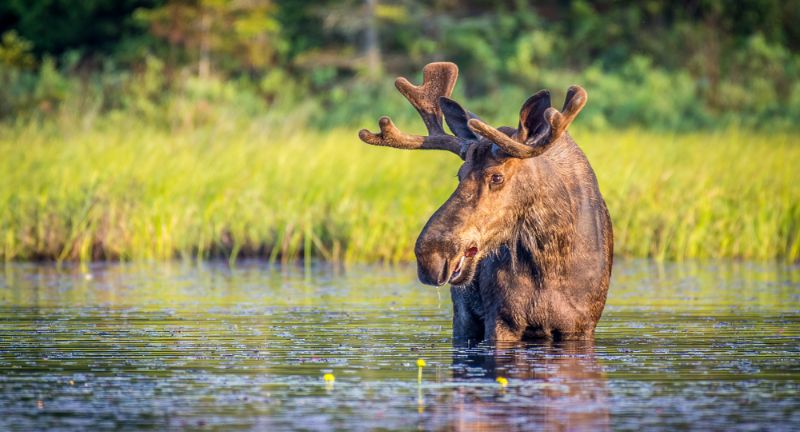
Shutterstock
Algonquin Provincial Park is one of Ontario’s oldest and most famous parks, known for its vast backcountry and plentiful lakes and rivers. It’s a favorite destination for canoeists and kayakers, offering extensive water trails and beautiful, isolated campsites. The park is also a hotspot for wildlife viewing, with opportunities to see moose, beavers, and numerous bird species. Each season in Algonquin presents a unique charm, from vibrant fall colors to the serene beauty of snow-covered landscapes in winter.
Shenandoah National Park, Virginia, USA
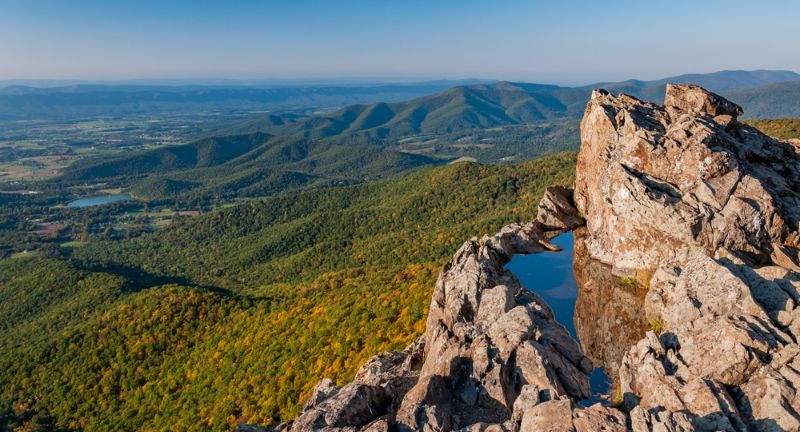
Shutterstock
Shenandoah National Park, nestled in the Blue Ridge Mountains of Virginia, is easily accessible from the urban centers of the East Coast. The park features over 500 miles of trails, including a portion of the Appalachian Trail, offering stunning vistas and a diverse array of plant and animal life. Shenandoah is particularly famous for its spectacular fall foliage, which transforms the landscape into a vibrant tapestry of colors. The park’s scenic Skyline Drive is a popular way to experience its rolling hills and deep valleys, offering easy access to numerous trails and overlooks.
Joshua Tree National Park, California, USA
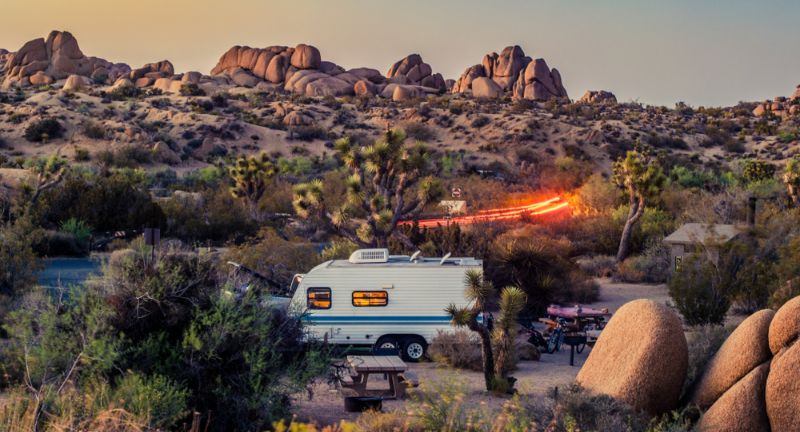
Shutterstock
Joshua Tree National Park, located at the convergence of the Mojave and Colorado deserts, is distinguished by its rugged rock formations and stark desert landscapes. The park is named after the bristled Joshua trees, which are native to the park’s higher Mojave Desert section. Outdoor enthusiasts can enjoy climbing, hiking, and stargazing in one of the newest Dark Sky Parks. Joshua Tree’s unique geological features and diverse flora and fauna make it a fascinating destination for both adventure and relaxation.
Bryce Canyon National Park, Utah, USA
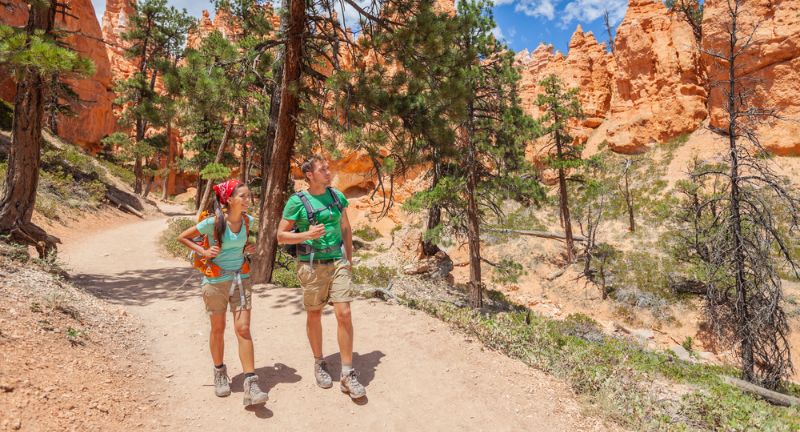
Shutterstock
Bryce Canyon National Park is celebrated for its extraordinary natural amphitheaters and the colorful limestone rock formations known as hoodoos. These unique structures have been formed by frost weathering and stream erosion over millennia. Hiking among the park’s intricate canyons and high plateaus provides a surreal experience, especially at sunrise or sunset when the rocks glow in vibrant colors. Bryce Canyon also offers night-sky programs, allowing visitors to gaze at the unobstructed views of the stars above.
Rocky Mountain National Park, Colorado, USA
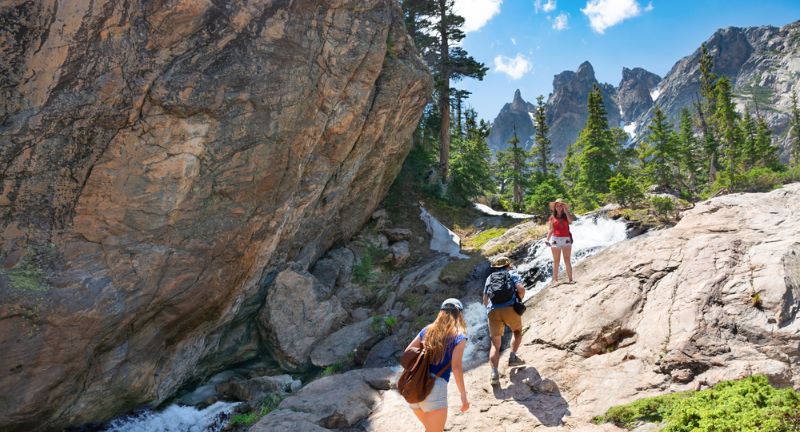
Shutterstock
Rocky Mountain National Park features a landscape of majestic mountains, alpine lakes, and a variety of wildlife, making it one of Colorado’s most iconic destinations. The park offers over 300 miles of hiking trails that range from easy walks to challenging mountain summits. Visitors can engage in activities like fishing, wildlife viewing, and, in the winter months, snowshoeing and cross-country skiing. The park’s diverse ecosystems and high altitude attract outdoor enthusiasts year-round, providing stunning views and memorable experiences in the high Rockies.
Assateague Island National Seashore, Maryland/Virginia, USA
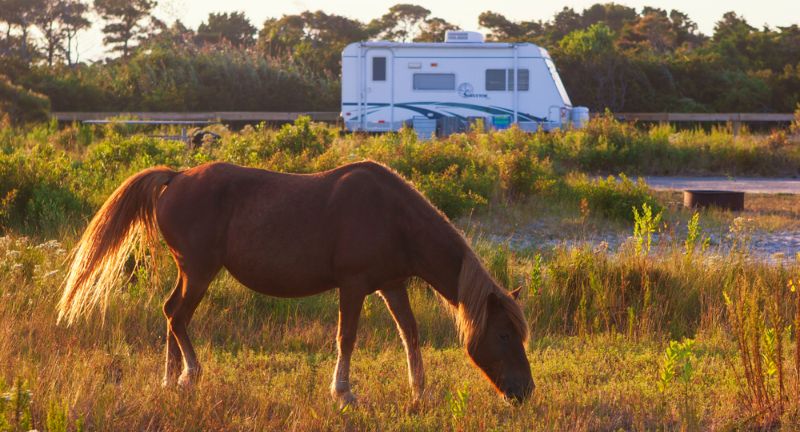
Shutterstock
Assateague Island National Seashore is famous for its wild horses roaming the sandy beaches. This unique barrier island, shared between Maryland and Virginia, offers a blend of sandy beaches, salt marshes, and coastal forests. Visitors can enjoy activities such as camping, bird watching, and kayaking, which provide close encounters with the island’s natural beauty. The dynamic landscape of Assateague changes with each season, offering a different experience every time you visit.
Fundy National Park, New Brunswick, Canada
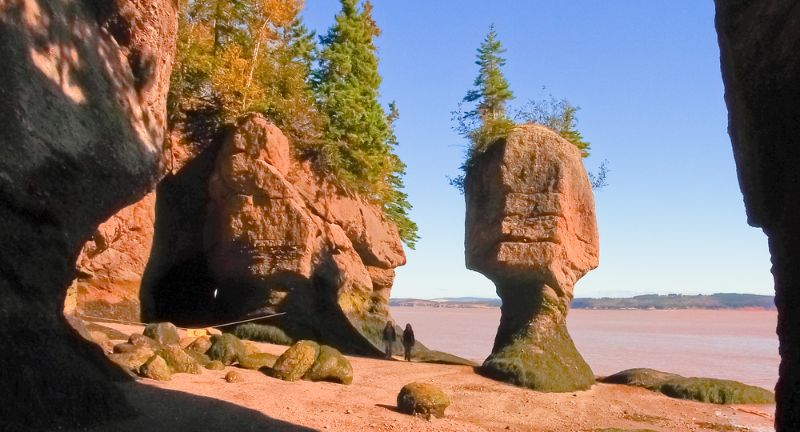
Shutterstock
Fundy National Park is notable for its spectacular Bay of Fundy, which experiences the highest tidal range in the world. This park offers lush coastal forests and deep river valleys, providing a diverse environment for a variety of activities such as hiking, kayaking, and exploring tidal pools. The dramatic tides can reveal the ocean floor at low tide and fill up the beaches and cliffs at high tide, creating a dynamic and ever-changing landscape. Fundy’s rich marine and forest ecosystems also offer ample opportunities for wildlife observation and photography.
Isle Royale National Park, Michigan, USA
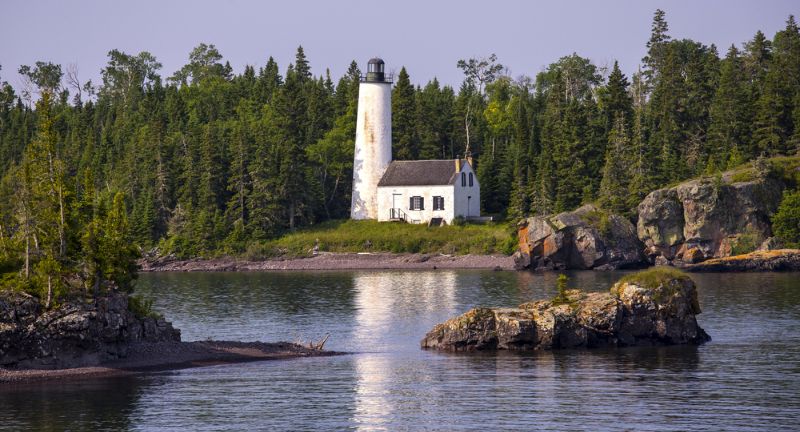
Shutterstock
Isle Royale National Park is an isolated island located in the middle of Lake Superior, offering a remote wilderness experience. This park is accessible only by boat or seaplane, adding to its untouched and pristine appeal. Isle Royale is known for its rugged natural beauty, hiking trails, and opportunities for kayaking and diving. The park also plays host to a unique ecological study involving wolves and moose, providing insights into predator-prey dynamics in a closed environment.
Death Valley National Park, California/Nevada, USA
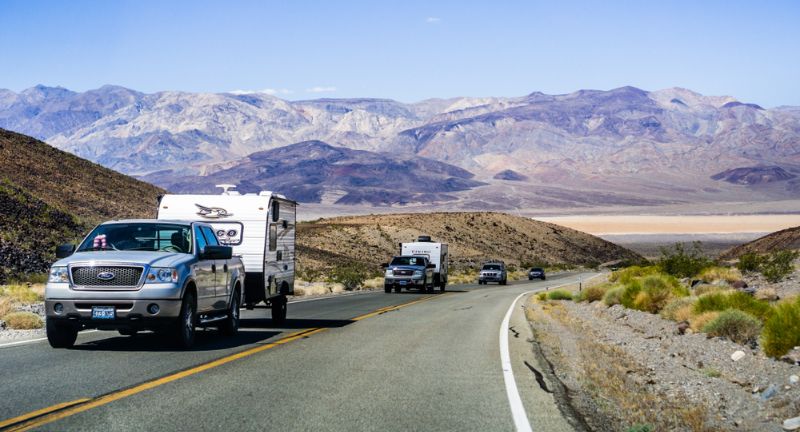
Shutterstock
Death Valley National Park is known for being one of the hottest, driest, and lowest places on Earth. Despite its extreme conditions, the park offers stunning landscapes of sand dunes, salt flats, and mountain ranges. Adventurous visitors can explore its vast wilderness areas through hiking, driving, and even cycling. The stark beauty of Death Valley is especially evident during sunrise and sunset when the desert colors come alive.
Cape Breton Highlands National Park, Nova Scotia, Canada
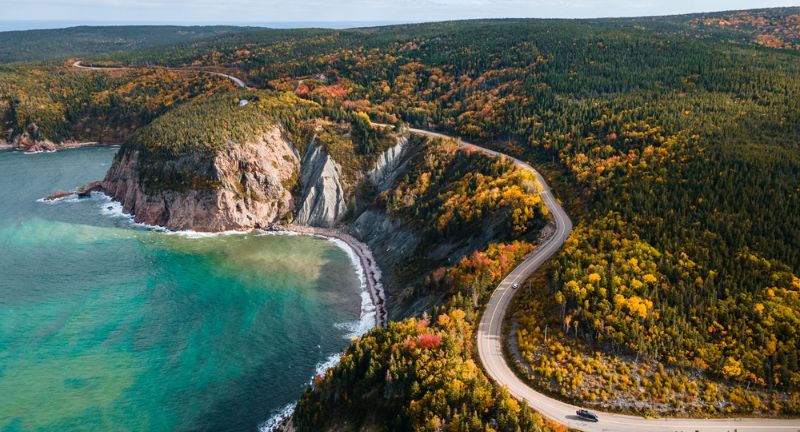
Shutterstock
Cape Breton Highlands National Park is one of Canada’s most enchanting places, where the mountains meet the sea along the famous Cabot Trail. The park offers a variety of landscapes, from rugged cliffs to lush forests and sweeping coastlines. Hiking trails like the Skyline Trail provide panoramic views of the Gulf of St. Lawrence and the chance to spot wildlife such as moose and eagles. The park’s diverse environments make it a spectacular location for outdoor activities and nature photography.
Sequoia National Park, California, USA
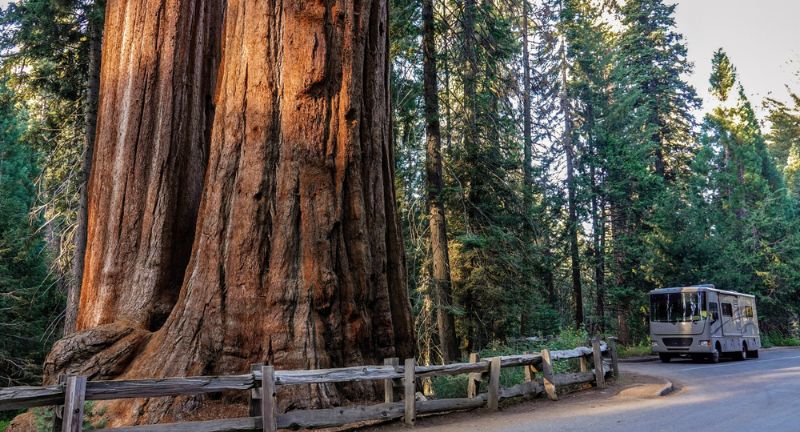
Shutterstock
Sequoia National Park is home to the giant sequoias, some of the largest trees on Earth. This park, together with its neighbor Kings Canyon, offers deep canyons, rugged foothills, and high mountain peaks. Visitors can explore a vast wilderness area that includes the famed General Sherman Tree, the largest living single-stem tree by volume. The park’s high sierras provide not only stunning views but also a range of outdoor activities such as hiking, backpacking, and wildlife viewing.
Everglades National Park, Florida, USA
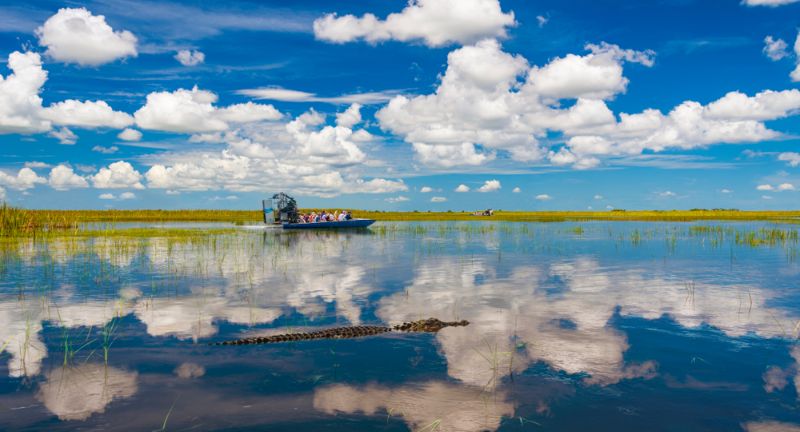
Shutterstock
Everglades National Park protects the largest subtropical wilderness in the United States. This unique ecosystem is home to rare and endangered species like the American crocodile and the Florida panther. Visitors can experience the Everglades by walking the boardwalks, kayaking through mangrove forests, or taking guided boat tours. The park’s vast wetlands offer spectacular opportunities for wildlife photography and birdwatching.
Denali National Park, Alaska, USA
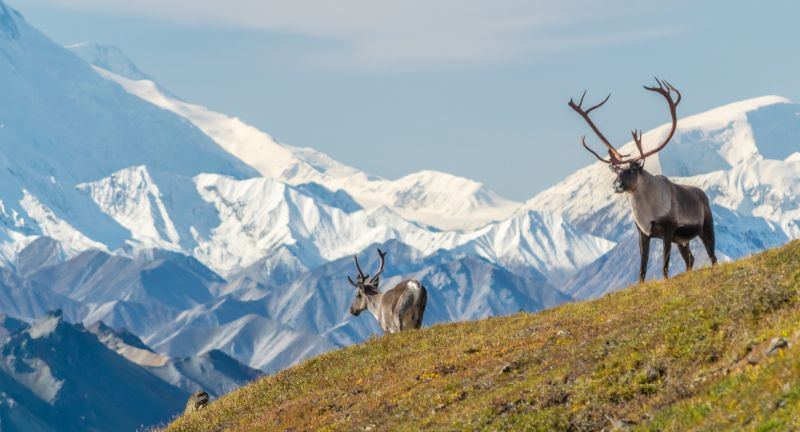
Shutterstock
Denali National Park is centered around Denali, the highest peak in North America, which rises dramatically above the Alaskan wilderness. The park offers unparalleled wilderness and wildlife viewing, including chances to see grizzly bears, wolves, and caribou. With its vast, unspoiled landscape, the park is a favorite for hikers and climbers seeking solitude and challenging adventures. Denali’s dynamic environment also provides opportunities for winter sports such as dog sledding and cross-country skiing.
Conclusion
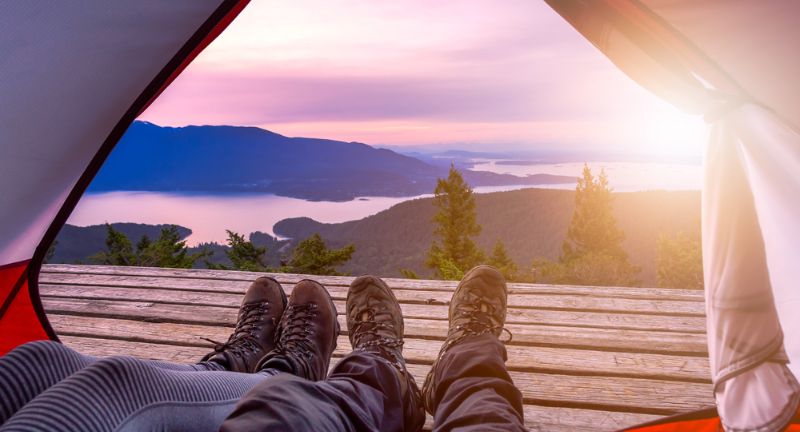
Shutterstock
Exploring these 25 camping sites in North America is more than just a journey through diverse landscapes—it’s an invitation to connect with nature on a profound level. Each location offers a unique story, woven from the threads of natural beauty, wildlife encounters, and the spirit of adventure. Whether you are watching the sunrise over a canyon, kayaking in pristine waters, or sitting quietly among ancient trees, these places offer peace and exhilaration in equal measure. As you pack up your gear and set out to explore, remember that each campsite is a gateway to understanding more about our planet and ourselves. May your travels be safe, your spirits high, and your memories filled with the unspoiled beauty of North America’s greatest camping sites.


























